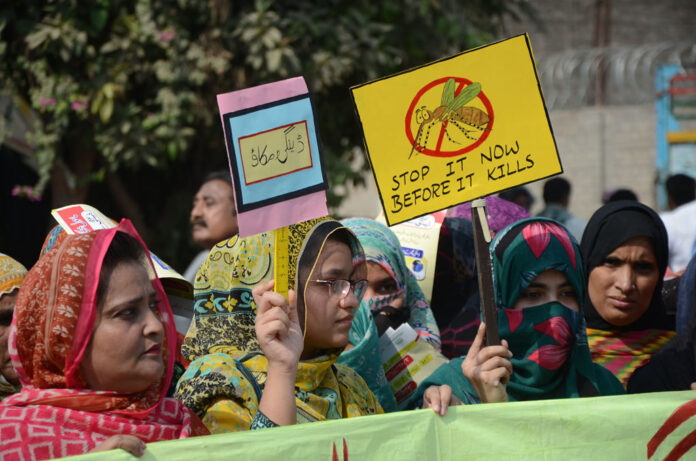ISLAMABAD: A record number of dengue fever cases have been reported in Islamabad despite the fact that recent monsoon rains have brought the temperatures down, a worrisome scenario for the government and for the public amid the ongoing pandemic, reported local media.
Islamabad District Health Officer Dr Zaeem Zia said that in the last 24 hours, 152 new cases emerged in the capital, taking the tally to 1,801. Earlier, on October 13, the city had reported 125 cases, according to the official data.
Zia emphasised that 84 cases were reported from the rural areas and 68 reported from the urban areas.
The spread of the disease is heavily related to human activity. The insects thrive in human habitation, laying their eggs in used tyres, flower pots, tree holes and any water-filled container.
As climate change alters monsoon and rain patterns in many countries, this creates damp and warm conditions that, along with rapid urbanisation, help the Aedes mosquitoes flourish.
Meanwhile, keeping in view of the alarming spike in dengue fever cases, the Punjab health department in collaboration with the district administrations has begun fumigation and an awareness campaign in the province.
According to government officials, despite various challenges posed by Covid-19, the government has been making all-out efforts and taking adequate measures to stem the further spread of the dengue virus.
Earlier on Saturday, Pakistan Muslim League-Nawaz (PML-N) vice president Maryam Nawaz criticised the Pakistan Tehreek-i-Insaf government for what she declared was its mishandling of the dengue outbreak.
“The entire world is facing coronavirus, but now because of their [government’s] incompetence, people are dying of dengue,” Maryam claimed, adding: “There is no one here like Shehbaz Sharif who used to visit hospitals.”
EPIDEMIC
In 1970, only nine countries faced severe dengue outbreaks. But the disease, which is spread by mosquitoes that can only survive in warm temperatures, is now seen in more than 100 countries. There are thought to be 390 million infections each year.
According to Thais Dos Santos, an expert adviser on the surveillance and control of arboviral diseases for the Pan American Health Organisation, dengue was reaching new areas as temperatures rise.
“The hotter the climate, the better the mosquito is at breeding, but it is now coming up higher and higher to cities like Bogotá and Mexico City that are well above sea level, cities traditionally believed to be safe from the Aedes mosquito.”
In 2011, a major outbreak of dengue fever — potentially lethal disease spread by mosquito bites — infected 20,000 and killed more than 300 people.
Subsequently, in 2019, rising temperatures across Asia and the Americas contributed to multiple severe outbreaks of dengue fever globally, making it the worst year on record for the disease.
Other Asian countries, including Bangladesh, Thailand, Cambodia and Laos, also had outbreaks, with a particularly severe situation in the Philippines, where thousands of people died of the disease, including hundreds of children.





















